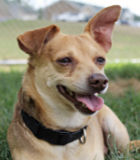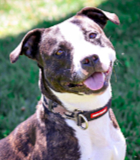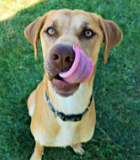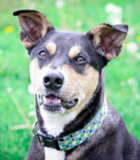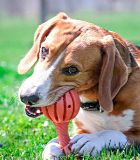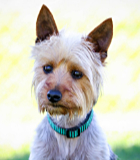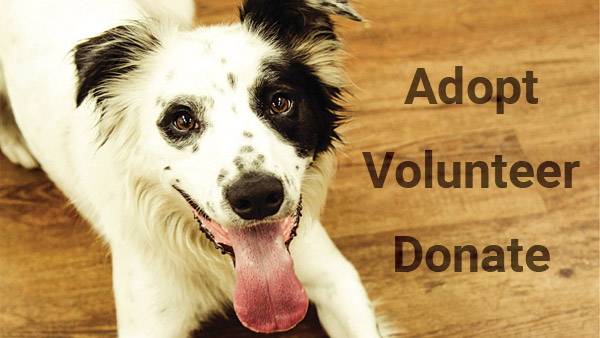ASPCA – Preparing Your Home for Your New Pet
- This topic has 0 replies, 1 voice, and was last updated 15 years, 2 months ago by
Mackenzie’s Admin.
-
AuthorPosts
-
February 26, 2009 at 10:46 pm #363
Mackenzie’s Admin
MemberHousekeeping is a casual affair for some—a little hair here or a stain there is of no major importance. Others are more fastidious. While adopting a shelter animal can turn your house into a home, your new furry friend could also turn it into a mess. With a little forethought and the following tips, you can have it all—happy, healthy pets and a clean, stylish home!
Keeping Your Pets Clean Will Keep Your House Clean!
–Keep your pet’s nails trimmed, and file down any rough edges that could shred upholstery or other fabric.
Wipe off your pet’s jowls and long, floppy ears after each meal.
–A large, absorbent placemat under food and water bowls will make for easier clean-up after messy eaters.
–Keep your dog well-groomed. If need be, trim hair around his genitals, anus and belly so that dirt and waste have no place to cling. Frequent brushing outdoors will keep indoor shedding to a minimum.Floors
–Machine-washable area rugs are preferable to wall-to-wall carpeting. If urine soaks into carpet backing, it is nearly impossible to remove. A carpet care product such as Bissell’s Spotlifter® may prove indispensable if you can’t remove the wall-to-wall.
–It is recommended that you roll up vegetable-dyed oriental rugs until your new dog is fully house-trained—and, if rugs have decorative fringe, don’t put them back down until your pet is well past teething age (over 8 months of age)!
–Tile, sheet linoleum, and Pergo® are pet-friendly floorings that allow you to easily wipe away any pet waste. Seal hardwood floors with polyurethane to prevent urine odor retention.
–Wipe off your dog’s paws each time he comes in from outdoors. Place a machine-washable area rug by the door. Keep a towel handy near the entry to wipe down your entire dog on rainy or slushy days.Walls
–Use washable semi-gloss paint in areas where the dog will spend the most of his time. This is essential for those with loose-jowled dogs, such as coonhounds and mastiff types, who are more likely to shake spittle onto the walls.
–Washable vinyl-backed wallpaper is easier to clean than traditional paper-backed wallpaper.
Relegate antique wallpapers or fabric wall treatments to the top half of the walls; paint or hang a washable wall covering below.
–Employ dog crates and gates to confine your new dog when home alone until his house manners earn him unsupervised freedom.Windows
–Avoid vertical blinds, pooling drapery, ornate tassels and long cords that can be a strangulation hazard. Should a dog get caught in any of these treatments, he could panic and bring anything around him crashing down.
–Think twice about mini-blinds, which can get bent beyond repair when they block a curious dog’s view of the outside world.
–Fabric shades, café curtains and dramatic valances are excellent choices for dog-friendly homes.Furniture
–Patterns and tweeds are more forgiving, but if a light-colored solid is your upholstery of choice, make sure the slipcovers are machine-washable.
–Leather and vinyl furniture easy to clean, but it can be damaged by too-long toenails! Be sure to clip your pet’s nails regularly!
–Provide comfy dog beds in each room or designate one piece of furniture as the dog’s place. Cover this piece with a washable throw and teach the dog that this is the only piece of furniture he is allowed to frequent.Home Decorum
Here are some fun ideas to spruce up your home decor for your companion animals:–Internal Dutch doors between rooms make it easy for you to manage which pets are allowed where. They also eliminate the need for awkward baby gates.
–Outdoor cat enclosures should be attached to the house with a cat door to allow free access for the animal.
–Fenced-in yards should have a buried, inward-facing section to prevent dogs from digging and tunneling.
If you have cats, be sure to install high-quality metal screens on all windows.
–You can install a folding (hinged) cat perch under a window for kitty’s viewing pleasure.
–What about a built-in alcove for your dog’s crate?
–By adding a porthole to a kitchen cabinet, you’ve got yourself a new place for a cat litter tray! Not only will it look clean and neat, the porthole will keep dogs from getting in and munching on cat waste. The cabinet door can be opened to allow access for cleaning. Mounting this cabinet at waist or counter level would be especially helpful for seniors.
–A small lift along a wall where the litter box or food and water bowls are placed would make cleaning and feeding a lot easier for senior pet owners. The lift would be used to raise and lower the litter box or food bowls.
–If you’re really handy…how about an outdoor septic disposal systems for dog waste?!Adapted from articles by Jacque Lynn Schultz, Director, ASPCA Companion Animals Program Advisor, and Dr. Stephen Zawistowski, Senior Vice President, ASPCA National Program Office.
-
AuthorPosts
- You must be logged in to reply to this topic.



